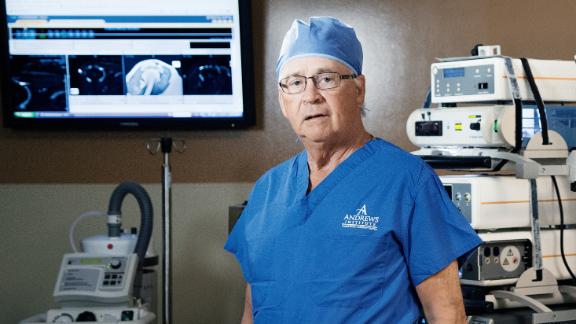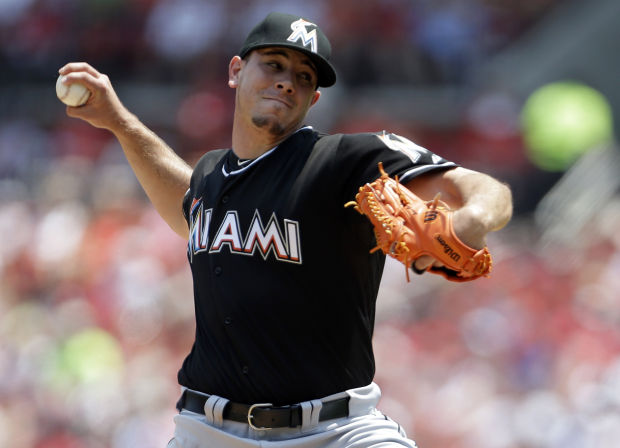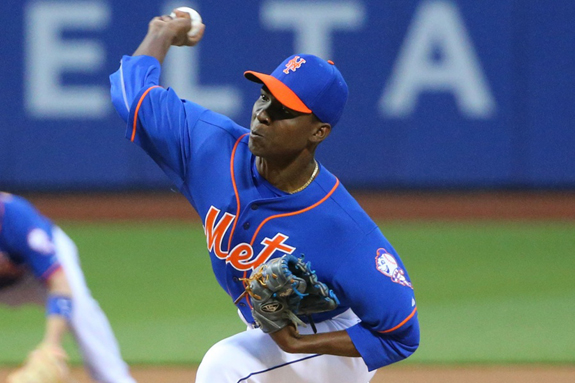
The noted surgeon Dr. James Andrews put out a comprehensive statement just this past Wednesday illustrating, in detail and with remarkable conviction, his position on the rash of UCL injuries. With sweeping clarity the good doctor all but puts to rest several raging debates on the causation and risk factors, admitting, that we are currently in the midst of an “epidemic.” He makes several noteworthy conclusions:
On the epidemic itself:
“During the past few years there has been an “epidemic” rise in the number of professional pitchers requiring ulnar collateral ligament reconstruction (“Tommy John surgery”). This is like déjà vu, as a similar sharp rise was seen in adolescent pitchers near the turn of the century.”
“These two rises are indeed connected; that is, today’s pro pitcher in his 20’s was an adolescent pitcher a dozen years ago. Thus in many cases, the injury leading to Tommy John surgery in today’s young pro pitchers actually began while they were adolescent amateurs. Observations by orthopedic surgeons support this link, as the torn ulnar collateral ligament (UCL) in a pro pitcher usually looks like it has worn out over time.”
On risk factors for young pitchers:
Research has shown that the amount of competitive pitching and pitching while fatigued are strongly linked to injury. Other risk factors may include pitching on multiple teams, pitching year-round, playing catcher when not pitching, poor pitching mechanics, and poor physical conditioning.”
On the perception that some pitchers come back stronger after TJS:
“Not true. performance usually decreases over time for MLB pitchers after Tommy John surgery (similar to the typical decrease over time for healthy MLB pitchers).”
Dr. Andrews essentially attributed any incidental increases in velocity to:
“The pitcher working intensely with the physical therapist, athletic trainer, strength coach, and pitching coach.”
On breaking pitches as a risk factor:
“Not true. Too much competitive pitching and pitching while fatigued are the biggest risk factors.4,5,6 While biomechanical research and epidemiologic research have not shown a strong connection between curveball and elbow injuries, a young pitcher may not have enough physical maturity, neuro-muscular control, and proper coaching instruction to throw a curveball with good mechanics. The first steps should be to learn, in order: 1) basic throwing, 2) fastball pitching, 3) change-up pitching.”
On lowering the mound to reduce the stress that leads to TJ injuries:
“Not true. Elbow torques during full-effort pitching on a mound and full-effort throwing on flat ground are about the same. The real solution is for young pitchers to do less full-effort pitching and more throwing (practice throws, playing other positions, playing other sports). “
On Latin American pitchers suffering fewer elbow injuries:
“Not true. A recent survey showed that 16% of U.S. born-pitchers and 16% of Latin American pitchers in professional baseball have a history of Tommy John surgery.”
Dr. Andrews also goes on to list 9 specific recommendations for pitchers and baseball organizations wishing to reduce the incidence of these injuries.
Notable in the recommendations are four items of interest:
- Do not always pitch with 100% effort. The best professional pitchers pitch with a range of ball velocity, good ball movement, good control, and consistent mechanics among their pitches. The professional pitcher’s objectives are to prevent baserunners and runs, not to light up the radar gun.
- Be wary of pitching in winter league baseball. The UCL and body need time to recover and build strength, so the concept of annual periodization should include adequate rest from full-effort pitching.
- Exercise, rest, and nutrition are vital for a pitcher’s health. Performance-Enhancing Drugs (PEDs) may enable the athlete to achieve disproportionately strong muscles that overwhelm the UCL and lead to injury.
- Pitchers with high ball velocity are at increased risk of injury. The higher the ball velocity, the more important to follow the guidelines above.
You may read the full transcript here.
May 21 – The Alarming Spike In Tommy John Surgeries
It’s almost become not so much a matter of “if” but “when” for young pitchers needing Tommy John surgery. This season alone, Kris Medlen and Brandon Beachy each required a second elbow reconstruction, while Bobby Parnell, Oakland’s Jarrod Parker, Arizona’s Patrick Corbin, Detroit’s Bruce Rondon, Pittsburgh’s Jameson Taillon, Tampa Bay’s Matt Moore and most recently Florida’s Jose Fernandez will be going under the knife for the first time.
As Mets fans we’re well aware of the anguish having watched our very own Matt Harvey succumb to the dreaded ulnar collateral ligament tear. The UCL is a thick triangular band on the medial (closer to center) side of the elbow which connects the humerus to the ulna.
The act of throwing involves advancing the torso ahead of the arm followed by rotating the shoulder internally and (the acceleration phase) thrusting the humerus forward with the forearm trailing which results in the commonly described “whipping” motion. This puts tremendous tensile strain on the UCL at the elbow, particularly if you twist the elbow in a medial rotation to effect the spin you need for a breaking pitch.
We’ve all heard about how throwing is an “unnatural” act. There is some truth to the way the humeral head (the near end of the upper arm bone) fitting into something called the glenoid fossa (the “hole” in the scapula at the center of the shoulder) results in an awkward inversion when throwing overhand. Now this seems odd to me because when I look at cavemen in places like the Natural History Museum they all seem to be throwing spears and rocks overhand. Somehow I don’t think they suffered from UCL tears, “Hey Ugg, I think I tore my UCL with that last spear chuck at that bison.” “Ehh, rub some mastodon poop on it and call it a day Groog.”
But there’s nothing humorous about tearing a ligament, and the fact is humans have been throwing overhand to gain accuracy and power for over a million years and we clearly have a biomechanical adaptation for it. The problem with pitchers is the number of repetitions over time. I think there were only so many bison and only so many spears back in Groog’s day.

Eno Sarris of Fangraphs recently looked at some numbers that supported the notion that breaking pitches contribute to injury. He observed that Jose Fernandez threw more curve balls than anyone in 2014. He also linked to a Jeff Zimmerman article from March of 2012 that looked at 43 pitcher seasons where the pitchers threw sliders more than 30% of the time. Of those pitchers, over 46% of them ended up on the DL the following season. For curveballs he moved the percentage even lower to 25% of the time (to get enough of a sample), and of these pitchers (which included names such as John Lackey, A.J. Burnett, Josh Beckett, and Jonathan Niese), 51% of them ended up on the DL. I asked Zimmerman about Harvey and he said he couldn’t look at him because it was his first full season and he had nothing to compare it to, but to me it sure seemed like Harvey was using that devastating (in more ways than one) slider with more frequency than the previous year.
Over at Sports Illustrated, Tom Verducci, of now debunked “Verducci Effect” fame, chimed in with his own article this past April. He changes his tune somewhat from increases in yearly innings being the biggest culprit, to pitchers throwing more and harder at increasingly younger ages. He quotes:
“Major League Baseball gets the blame for pitchers getting injured,” said Glenn Fleisig, research director at the prestigious American Sports Medicine Institute in Birmingham, Ala. “But the fact is these pitchers definitely have some damage in their arm when they get them.”
Rate of Top-30 High School Draft Picks to Undergo Tommy John Surgery:
2002-09 • 39 Pitchers • 5 TJS • 12.8 Percent
2010-12 • 16 Pitchers • 5 TJS • 31.3 Percent
2013-14 • ???
Mark Mulder even tweeted on the subject with this:
You want to stop TJ injuries—-then don’t play baseball. Kids pitch year round and don’t play other sports. Arm only has so many bullets.
Verducci, however, seems to heap the most blame on velocity, again quoting Fleisig:
“Velocity is the word of the day,” Fleisig said. “The pitcher in 2014, or say 2012, is different from the pitcher from just five years ago. Back then, with the increase in travel ball, you had to start worrying about pitching too much. Now you have to worry about pitching too much with more velocity. That’s not a good combination.”
You have to admire Verducci for trying. He’s been on this topic from day one, but like his year-to-year innings limits I think implying that UCL damage results from pitchers with too much mileage who throw too hard too often is probably an oversimplification.

Watching Rafael Montero the other night you somehow got the sense that although his stature is relatively diminutive he doesn’t run the risk of a Wheeler or Harvey because of his free and easy delivery. “Easy gas” they call it. I think mechanics are certainly a factor, but beyond that, there is also the fact that Montero didn’t start playing professionally until he was 17 — not a lot of mileage there.
As Fleisig said in the Verducci piece, there’s some truth in the “only so many bullets” hypothesis when you add high velocity to the equation. He offered the example of a rubber band stretched close to its limit 8 , 9, 10 times then it snaps, whereas you can stretch it to 50% it’s limit almost indefinitely. Fleisig seems to believe that pitchers who repeatedly give max effort are the real reason why so many youngsters are breaking down. The easiest way to get noticed after all is to blow a scout away with a 94 mph fastball. Montero in this respect is also interesting as a guy with pinpoint command who doesn’t necessarily have to rely on velocity. This is why I think Montero is going to win an awful lot of games for the Mets.
In the end, the jury is still out and studies are forthcoming. The complexity of the throwing motion combined with individual anatomical differences and minute idiosyncrasies in deliveries make a standardized approach to prevention almost impossible. As is the case with many complex issues, causation is likely the result of some combination of factors. I’ve always suspected the breaking pitch myself because it is so awkward to throw. If I had to give an answer I’d guess the problem lies somewhere in the confluence of tensile damage brought about by throwing too hard followed by the twisting and contorting of the breaking pitch motion. Stress + torque + too many reps = a visit to Dr. Andrews.
The velocity trap that many young pitchers fall into however can’t be dismissed. People always talk about pitchers back in the day who threw 150 pitches routinely and never missed a start, but we really have no idea how many of them broke down. It would be interesting if we could get some data on how often they threw breaking pitches but I think it’s already more or less understood that they didn’t throw as hard. You can see that just by looking at old film, short quick windups, snap deliveries, and lots of contact.
Nobody is going back to that any time soon. Pitchers love blowing batters away with gas and the fans love watching it. What might be interesting is the possibility of instituting specific controls that teach pitchers to hold back and live in the 89, 90, 91 range (when you can get by with it), only bringing 94 and 96 mph heat when you really need it. learning to pick your spots a little better with breaking pitches might also be a good idea. You hardly ever see this sort of variability these days, and most Mets fans have a hard enough time with our batters taking too many pitches — limits on velocity and breaking balls might just send them over the edge! Pitchers seem to get into patterns where they stick with what works — heat followed by a killer breaking pitch — and yet, teaching this sort of variability might go a long way in extending careers and preserving arms.
*As I finished writing this I checked my twitter feed one last time and wouldn’t you know it, add Martin Perez to the list of young starters going under the knife for Tommy John surgery.















